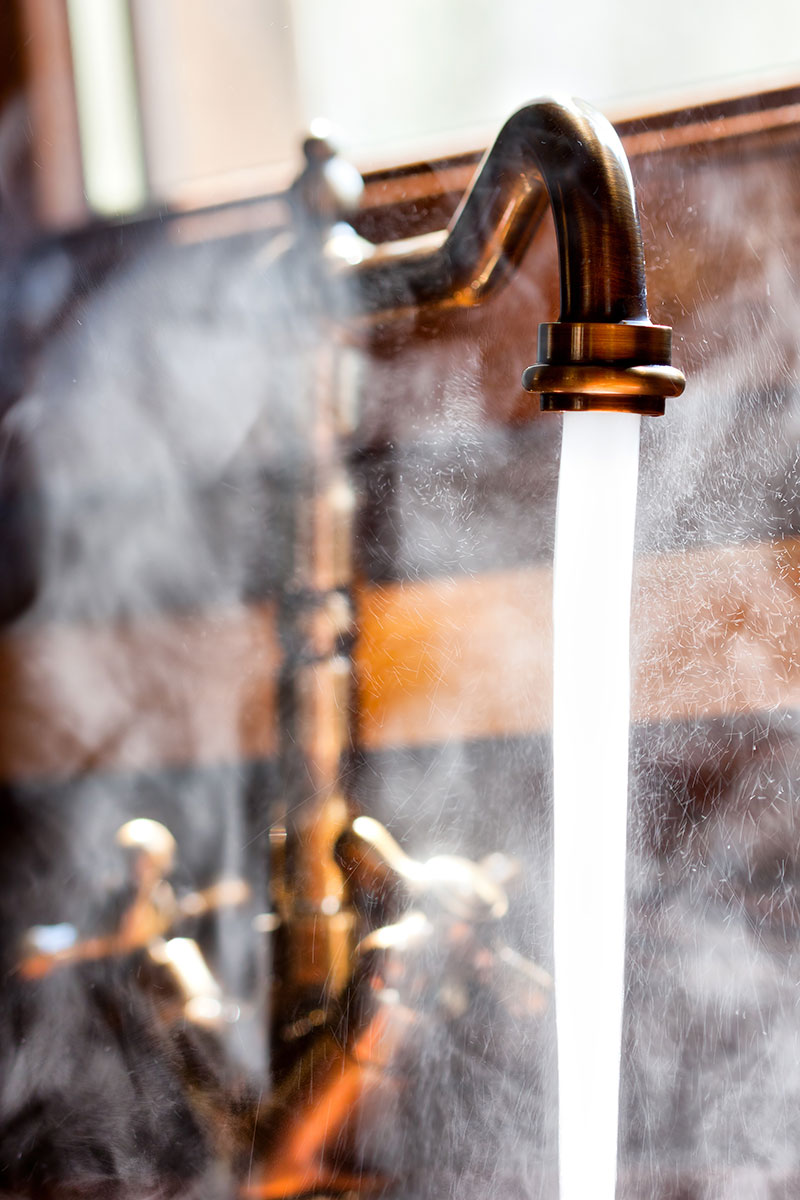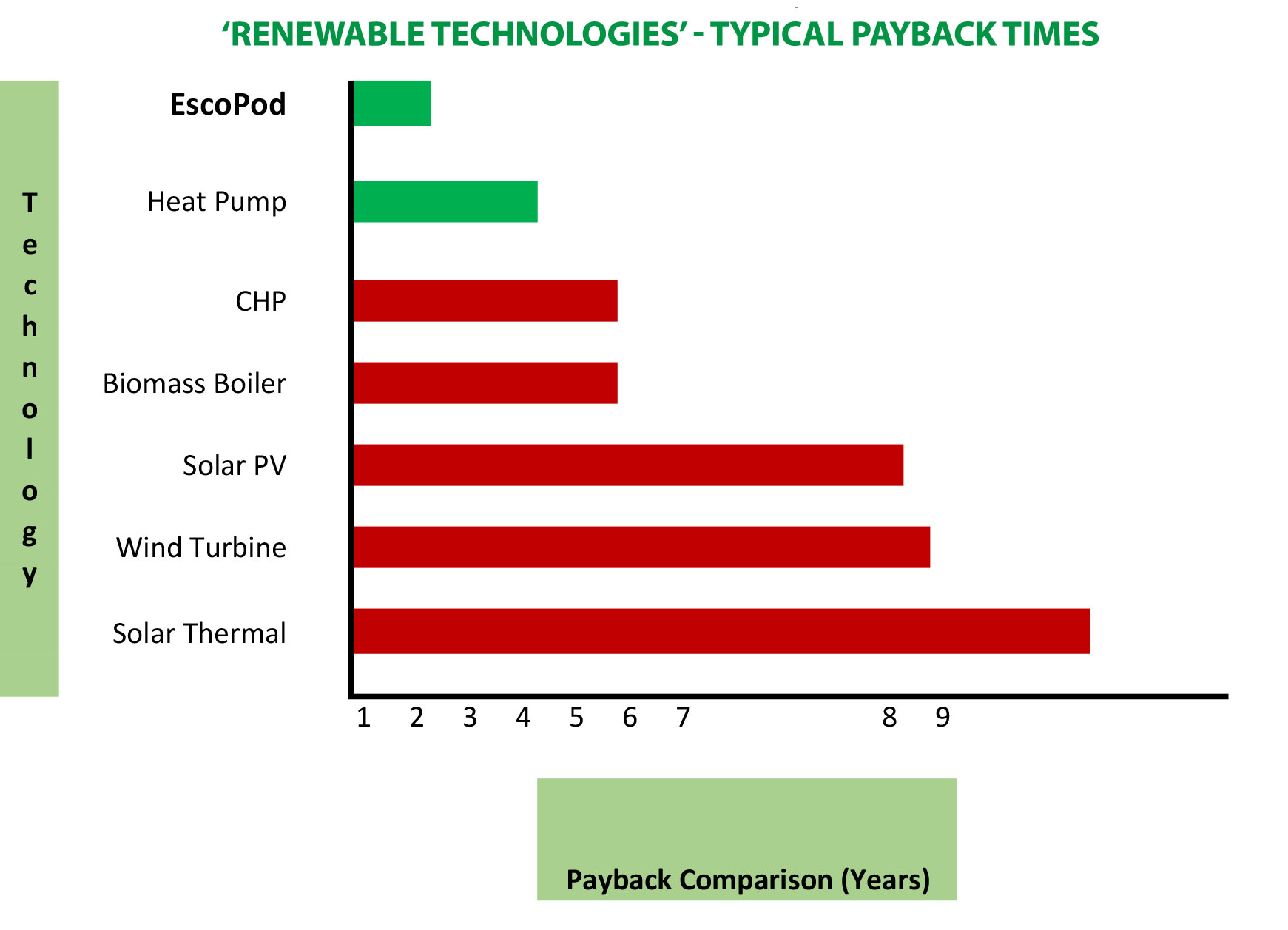Hospitality
Plug-n-Play Water Heating Systems
The Irish Hotels Federation state that the hotel industry in Ireland is spending in the region of €70 – €100 million per year on energy. It is one of the largest energy users in the commercial sector, albeit the one with the most potential for energy efficiency improvements.
The EscoPod can reduce CO2 emissions by 60% and save up to 80% on water heating costs leading to enormous energy savings.
Hospitality Case Study
Hotel (approx. 200 bedrooms + leisure centre)
Annual Heating Load: 2,175,265 kWh
Existing heating system: LPG Boiler (70% efficient)
Annual Energy costs: €201,647
Annual Energy savings: €118,123
Energy cost savings: 58.5%
Annual CO2 reduction: 513 Tons (60% reduction)
Pay-back period: 2.8 years
Accumulated savings of €1 million over 10 years

12 Month Energy Consumption Comparison
| Existing Heating System | EscoPod | |
|---|---|---|
| Heating | 2, 175,265 kWh | 2, 175,265 kWh |
| Energy Costs | €201,647 | €83,573 |
| CO2 Emissions | 865 tons | 353 tons |
The EscoPod
“The EscoPod outperforms all other thermal heating systems, making sustainability profitable.”
The EscoPod is a prefabricated thermal energy centre, incorporating turbine driven heat pump technology, that is delivered to your site and takes over from your boiler plant to deliver hot water at a fraction of the cost and with massive energy and CO2 savings.

Heat Pumps are tested when asked to deliver high temperature water, consume power that may not be available, and their economic feasibility is vulnerable to rising electricity prices.
The EscoPod delivers 90°C water; generates its own power; and is resistant to rising electricity prices.
Testimonials
Here’s what our clients had to say about our services:
“We needed an innovative solution that would totally reform our heat generation and distribution network. And we found it. In the EscoPod”.
Installed in late 2015 in Nenagh, the EscoPod has resulted in a 20% reduction in CO2. It now provides 95% of the site’s heating requirements, replacing those heavy fuel boilers. It also generates electricity for the plant and helps recover heat from the refrigeration process to reuse elsewhere.
In effect, ABP Nenagh has eliminated its need for fossil fuels to generate hot water. It has also dramatically exceeded almost all its the sustainability targets within a single year.
(Source: Irish Food Magazine, 2017)
